Light vs. Dark Themes in Interior Design: Which One is Right for You?

Interior design is an essential part of creating a home environment that reflects your personality and style. One of the most fundamental choices you’ll face when designing a space is deciding between a light or dark theme. Both light and dark design themes have their own distinct advantages and create different atmospheres in a room. Let’s explore the benefits of each, helping you choose the one that fits your space and lifestyle best.
The Allure of Light Themes
Light themes are often associated with openness, cleanliness, and simplicity. They tend to make spaces feel airy and spacious, which is ideal for smaller rooms or homes where natural light is limited. Here’s why light themes are so popular:
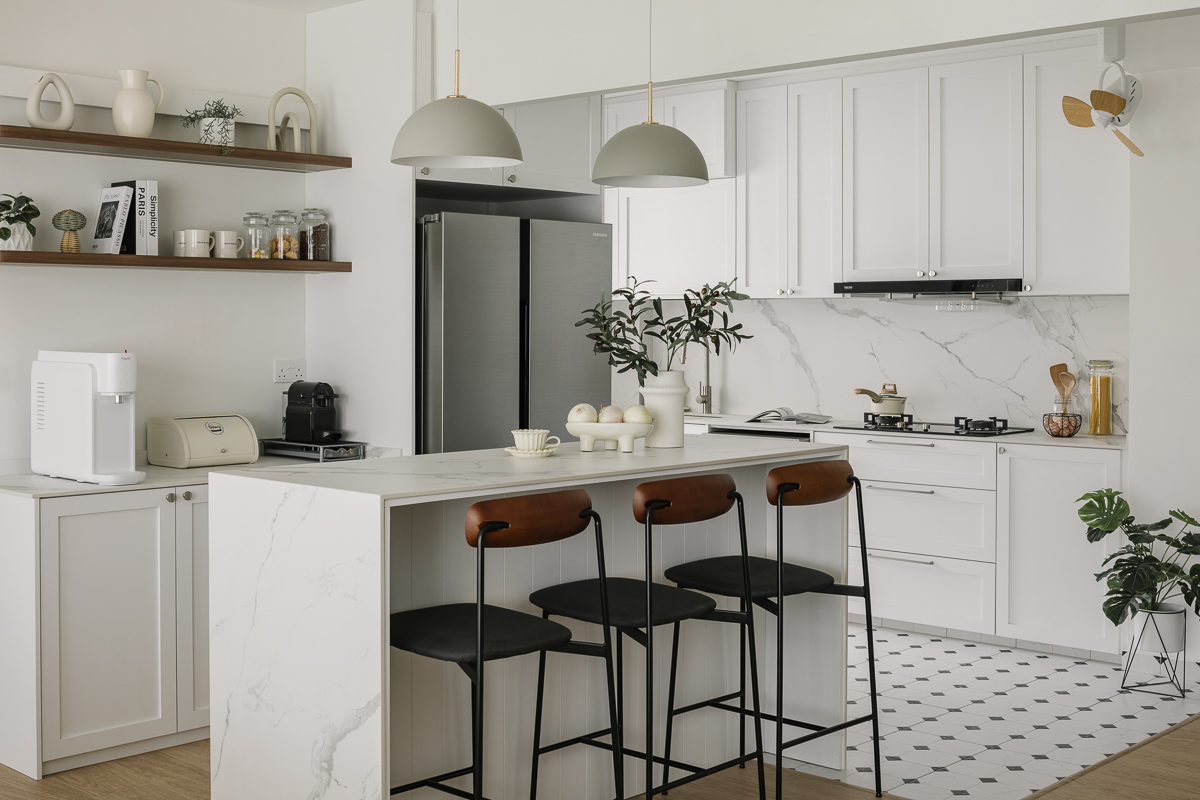
1. A Clean & Fresh Look
Light colours convey a sense of cleanliness and freshness. They work well in kitchens, bathrooms, and other areas where you want to emphasise hygiene and openness. These themes create a calm, clean aesthetic with fewer visual distractions. The simple backdrop allows the eyes to move freely across the space, reducing clutter and making the room feel larger. They make ceilings seem higher and spaces feel more breathable. To avoid flatness in light interiors, layering textures is key. Textiles such as marble, wood, or patterns create additional dimension while keeping the design fresh and interesting.
2. Timeless & Versatile
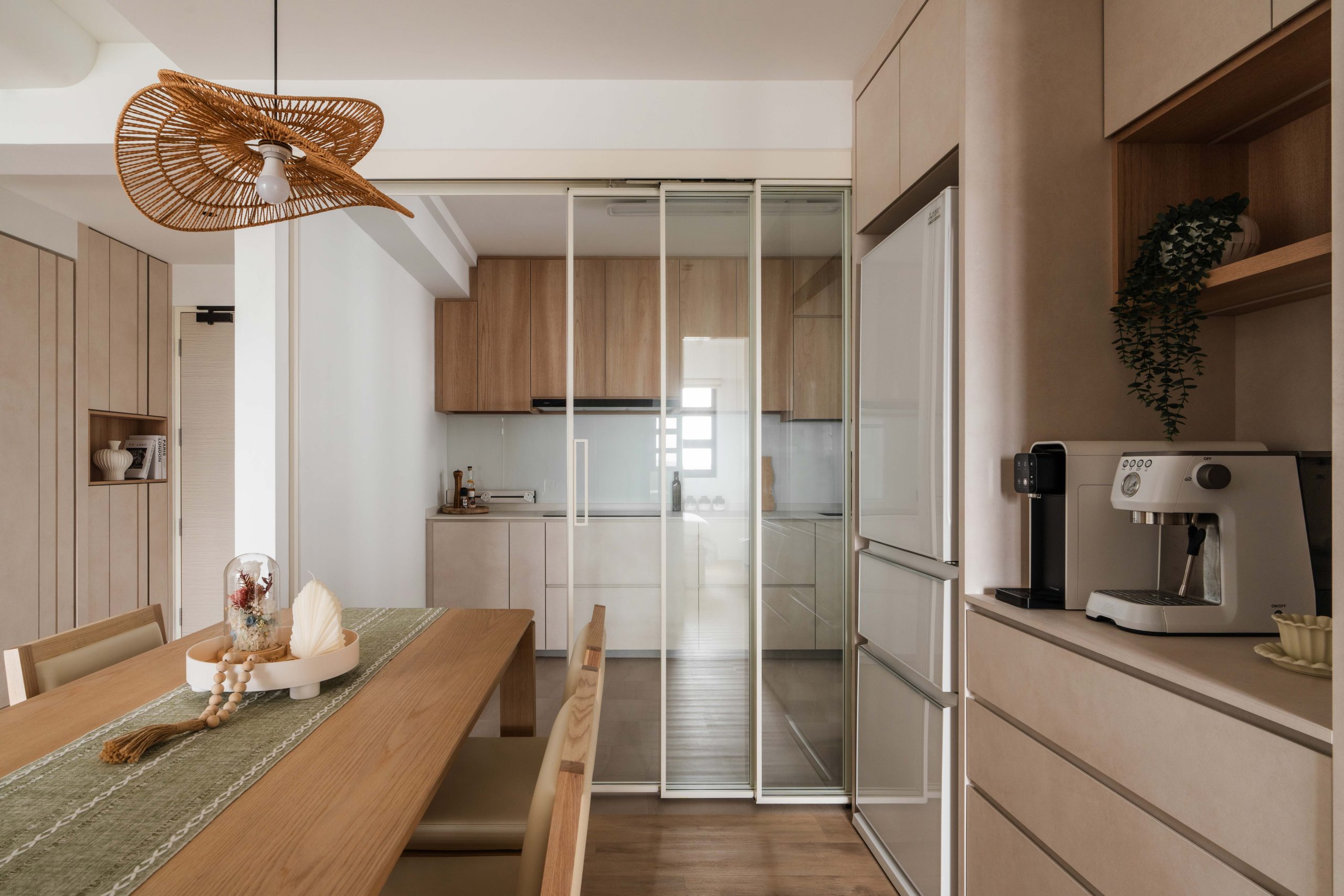
Pairing light walls with wooden elements, particularly light or medium-toned wood, adds an organic, timeless feel. This combination evokes a Scandinavian or Japandi aesthetic, both of which have enduring appeal. They pair well with a variety of design styles, from Nordic to Coastal Chic. A light theme also provides the perfect backdrop for accent colours and textures, allowing you to switch up the look of your room easily with different decor pieces.
3. Enhances Natural Light
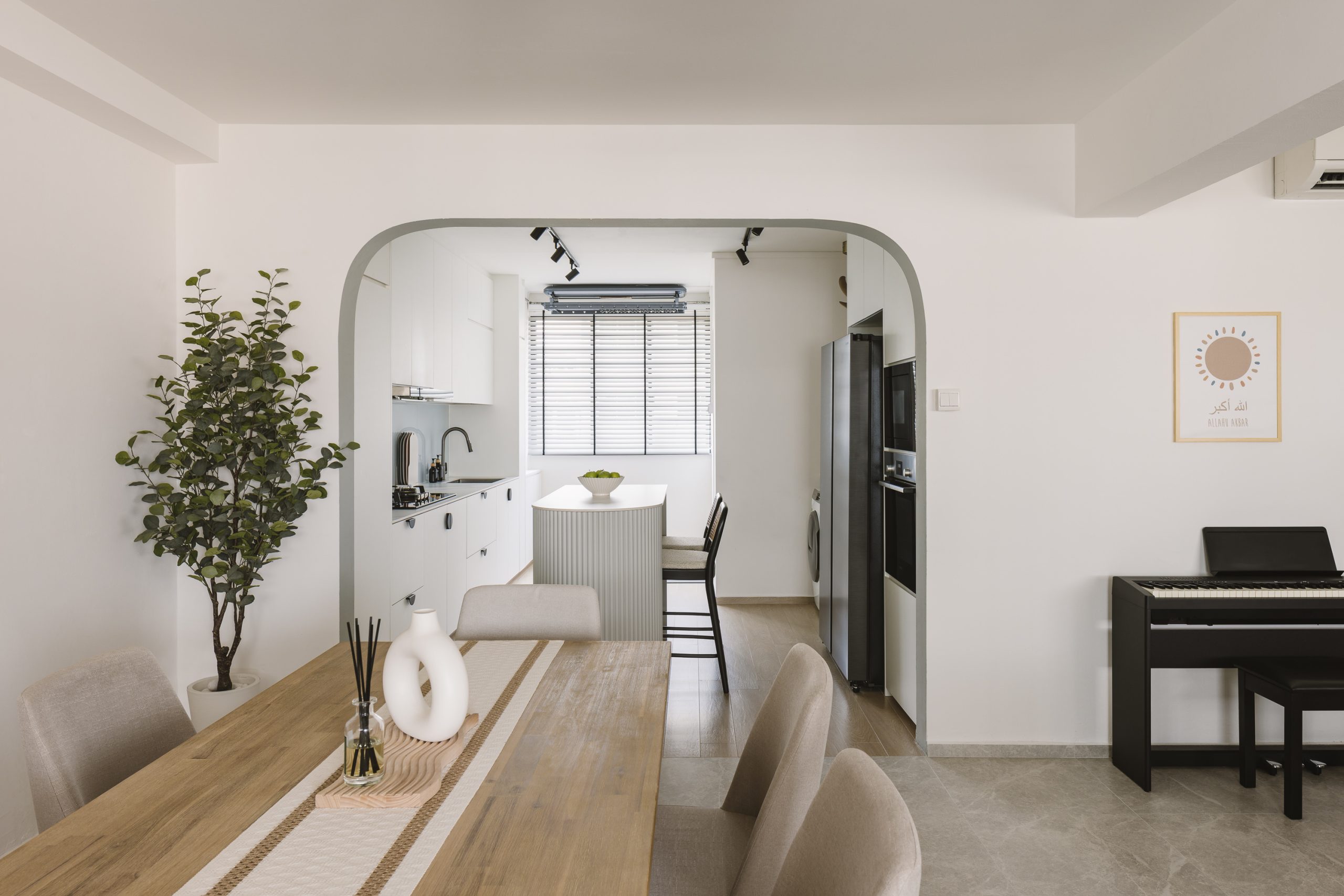
Scandinavian interior design are one of popular choices among Singaporeans. If you’re lucky enough to have a room with plenty of windows, a light theme can enhance that natural light even further. The reflective surfaces of lighter walls and furniture can bounce sunlight around the room, making it feel warm and inviting throughout the day.
4. Creates A Sense Of Space
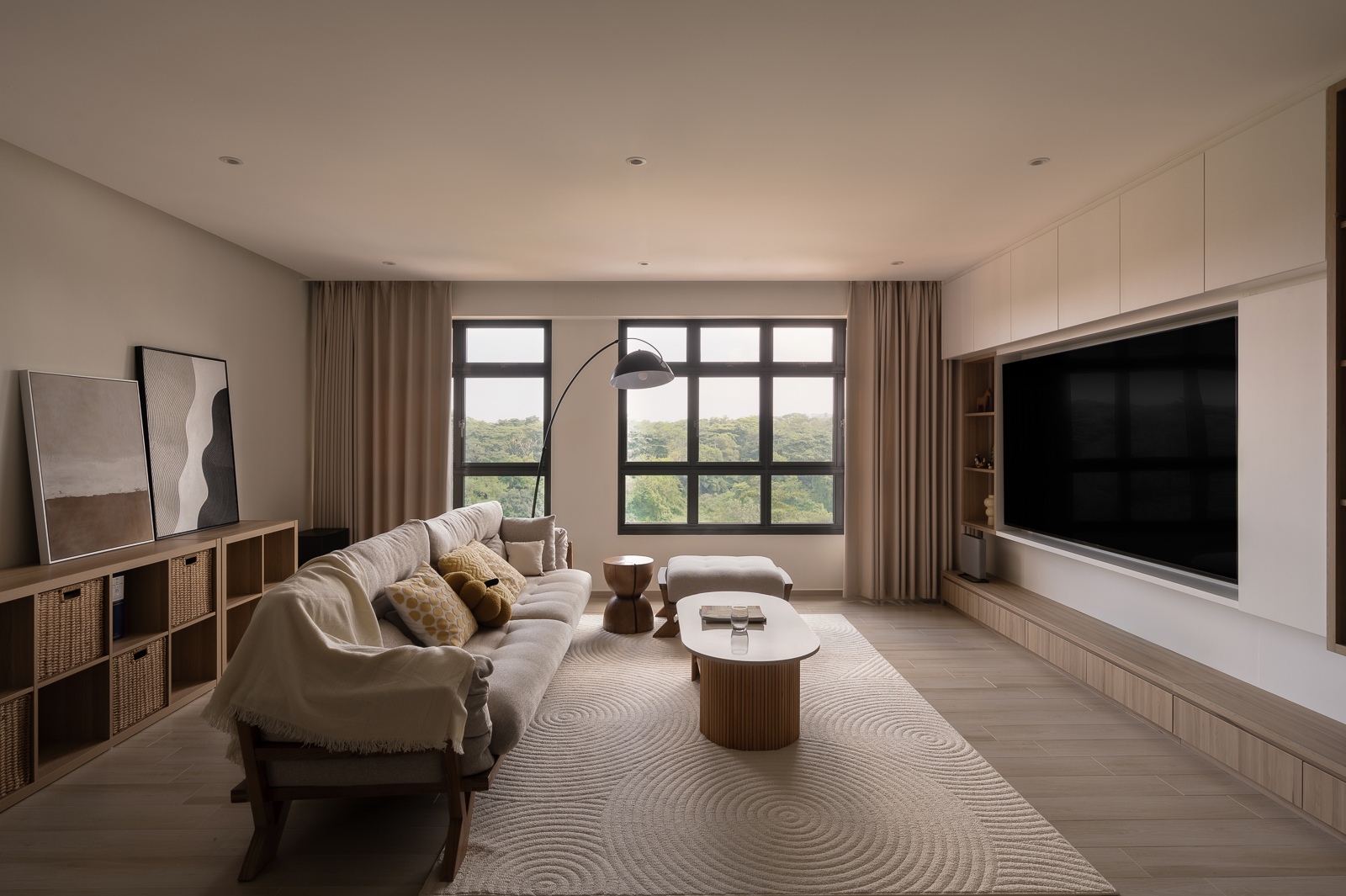
As seen in this cosy Scandinavian Minimalist home, lighter colours reflect more natural light. This reflection brightens up the room and creates the perception of a larger, airier space. When walls, ceilings, and floors are in lighter shades, the boundaries between them blur. This reduces the sense of enclosure, making the room feel continuous and less confined. A light interior theme becomes versatile with the use of different accent pieces, such as colourful cushions, artworks, or rugs. The base remains neutral and timeless, while the accents can be updated easily to refresh the look without overhauling the entire design. Lighter colours, such as whites, creams, and pastels, reflect more light, making a room feel larger and more open. This is especially important in apartments, smaller rooms, or spaces where maximizing light is crucial. If you have limited square footage, a light colour palette can make your home feel less cramped.
The Appeal of Dark Themes
Dark themes, on the other hand, are known for their sophistication, coziness, and dramatic flair. They can create an intimate atmosphere and make a bold design statement. Here’s what makes dark themes stand out:
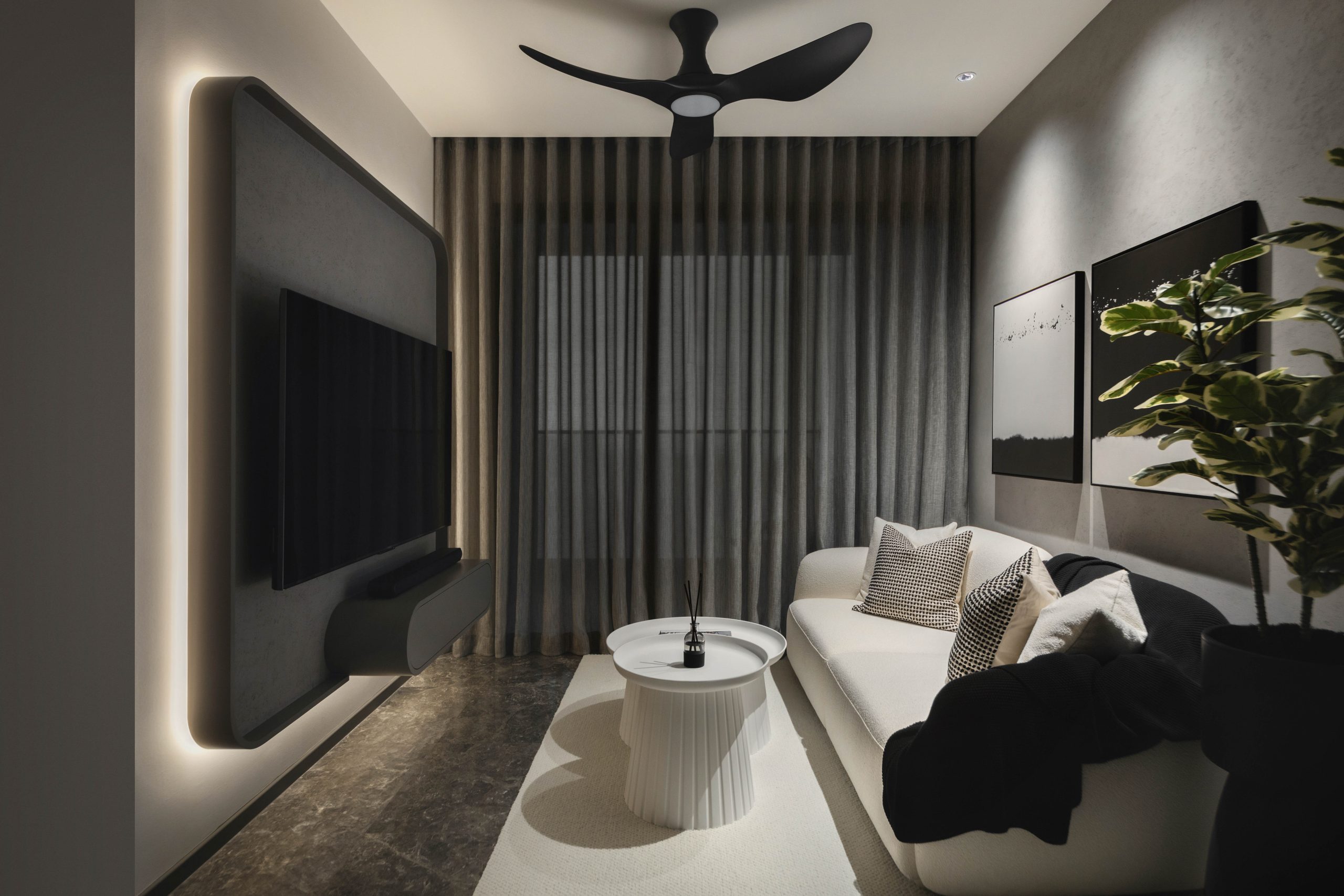
1. Cozy & Intimate Atmosphere
Monochromatic schemes using varying shades of a single colour such as white and black create depth and subtle contrast. This approach is timeless because it’s simple yet elegant, and it allows for easy adjustments with accent pieces. In a monochromatic interior, the absence of colour contrast highlights the importance of textures and materials. This encourages the use of rich fabrics, interesting patterns, and natural materials to create depth and interest. For example, using wool, steel or stone in different shades of the same colour adds dimension without overwhelming the space. With fewer contrasting colours, colour coordination becomes much simpler, making it easier to select furniture, decor, and accessories. This consistency simplifies decorating decisions and reduces the risk of clashing elements.
2. Adds Depth & Drama
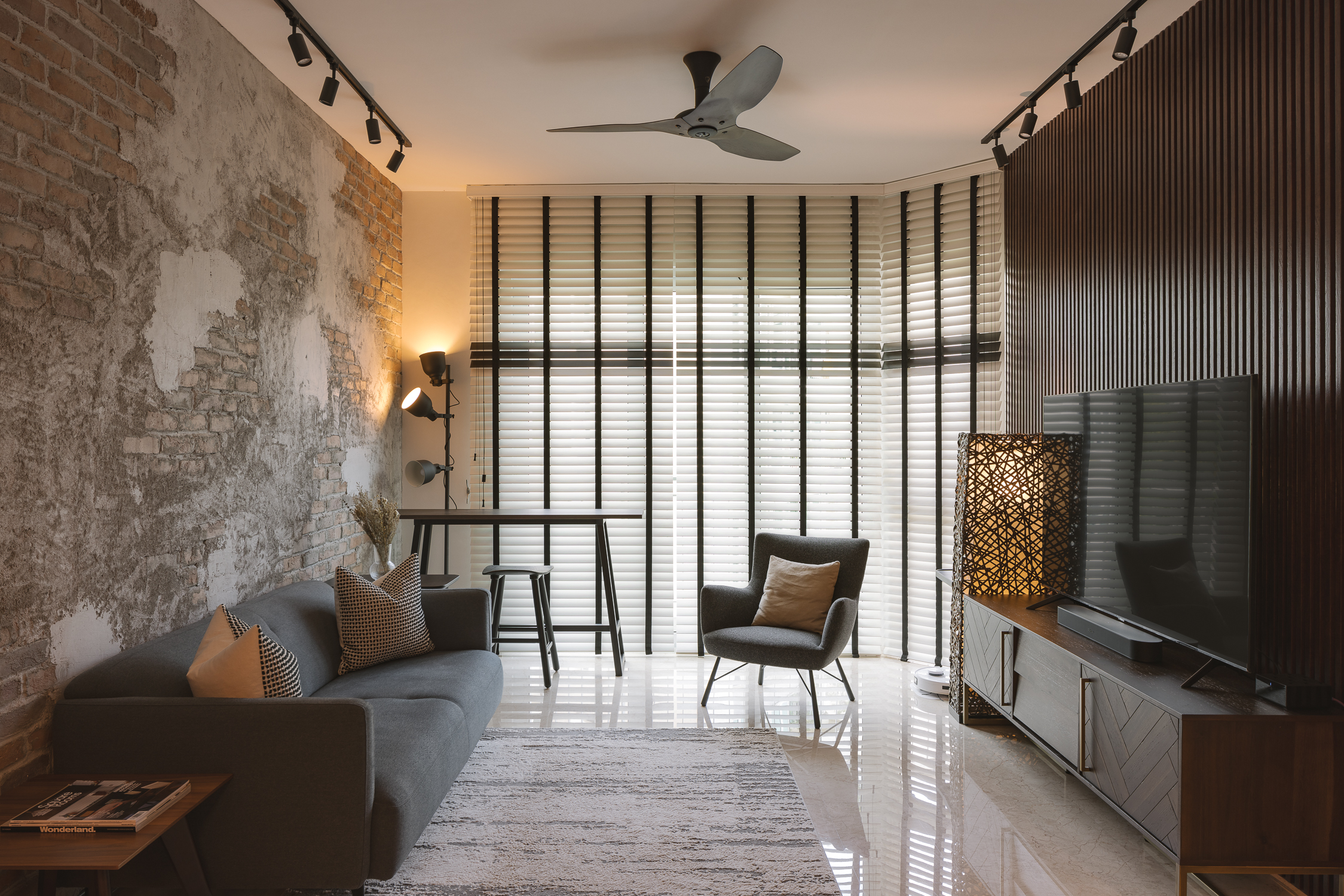
Dark walls and furnishings can make a space feel grounded and bold. Deep shades like navy blue, charcoal, and brown create a sense of depth, adding visual interest and drama to your interiors. A dark theme is perfect for creating a moody, sophisticated ambience. It helps to draws attention to specific design features like architectural details, lighting, or furniture, rather than focusing on small flaws in the surface. This creates an authentic, edgy aesthetic that feels genuine and unpretentious. The raw, edgy feel can inspire a sense of productivity, making the home feel like a dynamic, creative space. This is especially appealing for city dwellers or those who appreciate the blend of modern living with historic charm. This can make the design more cost-effective, as you can repurpose or refurbish items rather than investing in new, high-end materials.
3. Hides Imperfections
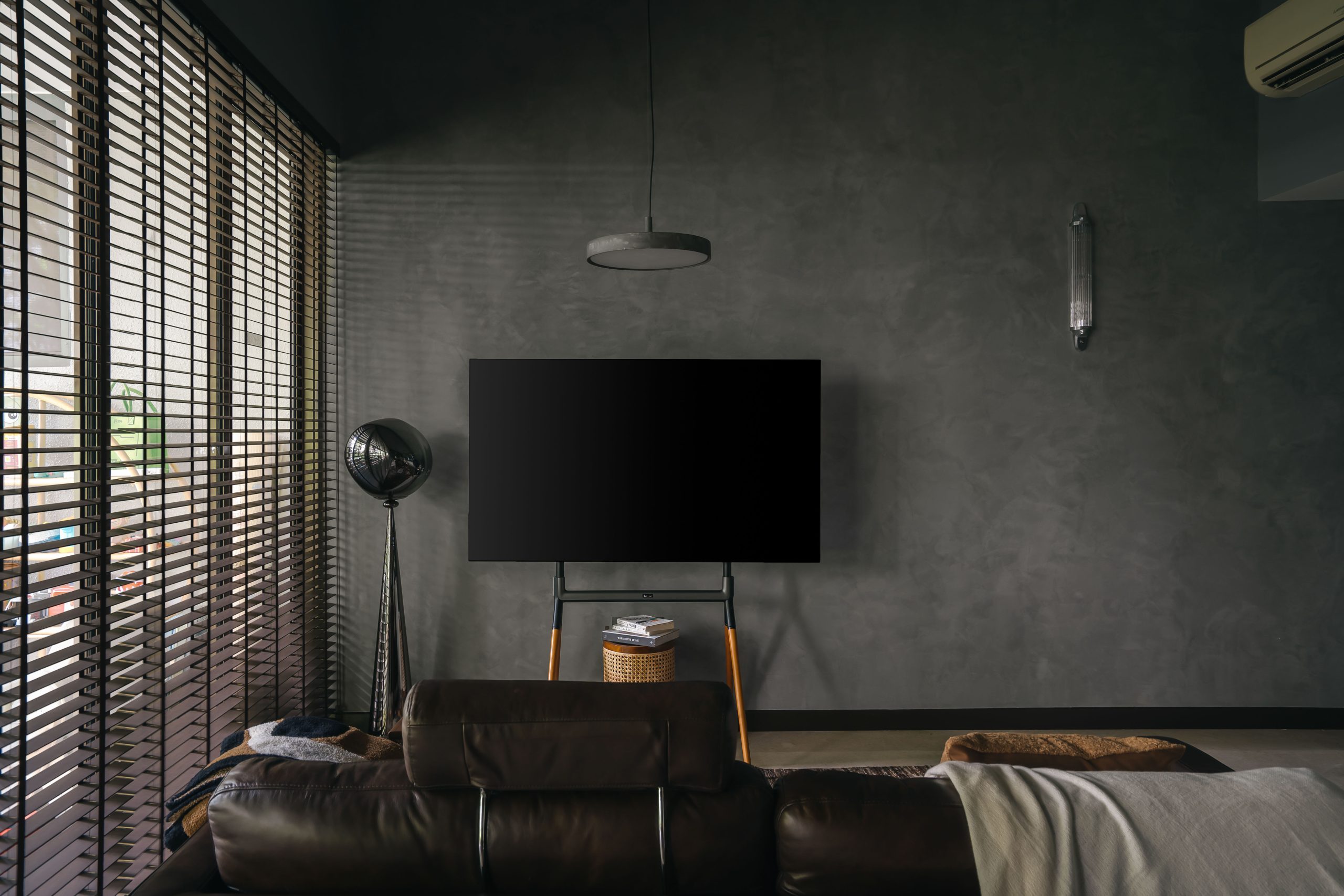
One major advantage of dark colors is their ability to conceal imperfections, dirt, and wear. Darker shades are much more forgiving when it comes to marks or scuffs, making them a practical choice for high-traffic areas or homes with children and pets. As seen in this refined Industrial home, the limewash feature wall provides a hand-painted, organic look with visible brushstrokes, variations in tone, and natural colour shifts. This makes the wall look dynamic and alive, adding visual interest without overwhelming the space.
These soft variations break up the intensity of dark colours, making the room feel more inviting. Though limewash typically has a matte finish, its texture can help diffuse light in subtle ways, adding a gentle glow to dark spaces. Like other matte finishes, limewash helps disguise imperfections on walls. Its uneven texture and natural finish hide flaws such as cracks, dents, or uneven plaster, making it ideal for feature walls in older or imperfect spaces.
Both light and dark themes offer unique advantages depending on the space and the ambiance you want to create. A light theme may bring brightness and simplicity to your home, while a dark theme can offer warmth, depth, and elegance. Whichever direction you choose, the key is to ensure that it aligns with your personal style and the functionality of the space. By carefully considering factors like room size, lighting, and maintenance, you’ll be able to craft a space that feels both beautiful and comfortable. In the end, the best design is one that makes you feel at home.
CONSULT OUR DESIGNER
-
13 October 2025 TIPS & GUIDES
6 Lighting Tips for Interior Design in Modern Homes in Singapore
-
9 October 2025 TIPS & GUIDES
7 Space-Saving Hacks for Modern Small Condo Design in Singapore
-
9 October 2025 TIPS & GUIDES
How to Choose the Right Colour Palette for Your Renovation Interior Design
-
9 October 2025 TIPS & GUIDES
Transforming Small Bathrooms: Space-Saving Tips for Bathroom Renovation in Singapore
-
9 October 2025 DESIGN INSPIRATIONTIPS & GUIDES
First Impressions Count: How To Create A Welcoming Entryway
-
10 September 2025 TIPS & GUIDES
Modern Small Condo Design for Pet Owners: 10 Tips for a Clean and Cozy Home

